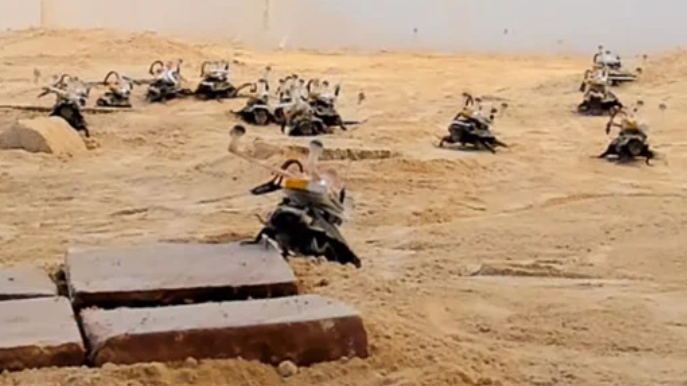SINGAPORE: Researchers from NTU Singapore, Osaka University, and Hiroshima University have developed a groundbreaking swarm navigation algorithm for cyborg insects designed to improve their ability to navigate complex terrains without becoming immobilized.
This innovation, detailed in a paper published in Nature Communications, is a major advancement in swarm robotics and has promising applications in disaster relief, search-and-rescue missions, and infrastructure inspections.
Cyborg insects are real insects outfitted with miniaturized electronic devices. These devices include sensors like optical and infrared cameras, batteries, and antennas that enable remote control of their movements.
The concept of controlling a single cyborg insect was pioneered in 2008 by Professor Hirotaka Sato from NTU Singapore’s School of Mechanical and Aerospace Engineering.
While this marked a significant step forward, a single cyborg insect’s capabilities are limited for large-scale operations, such as locating earthquake survivors within the critical 72-hour rescue window.
The newly developed swarm system employs a leader-follower dynamic, where one cyborg insect leads and directs the movements of 19 others. This system enhances the collective efficiency of the swarm in performing tasks across challenging environments.
The swarm control algorithm and supporting computer programs were developed by Professor Masaki Ogura of Hiroshima University and Professor Wakamiya Naoki of Osaka University.
Meanwhile, Professor Sato and his NTU team prepared the cyborg insect swarm, implemented the algorithm, and conducted physical experiments in Singapore to validate the system.
Laboratory tests demonstrated significant benefits of the new algorithm. By enabling the insects to navigate with greater autonomy, the risk of them becoming trapped in obstacles was minimized.
Additionally, nearby swarm members were capable of assisting insects that were stuck or had flipped over, showcasing the cooperative potential of the swarm.
This research represents a leap forward in the field of swarm robotics, with practical implications for saving lives and improving operational efficiency in disaster scenarios.
Scientists hope that further development of this technology will expand its potential applications, setting the stage for new breakthroughs in robotics and beyond.

